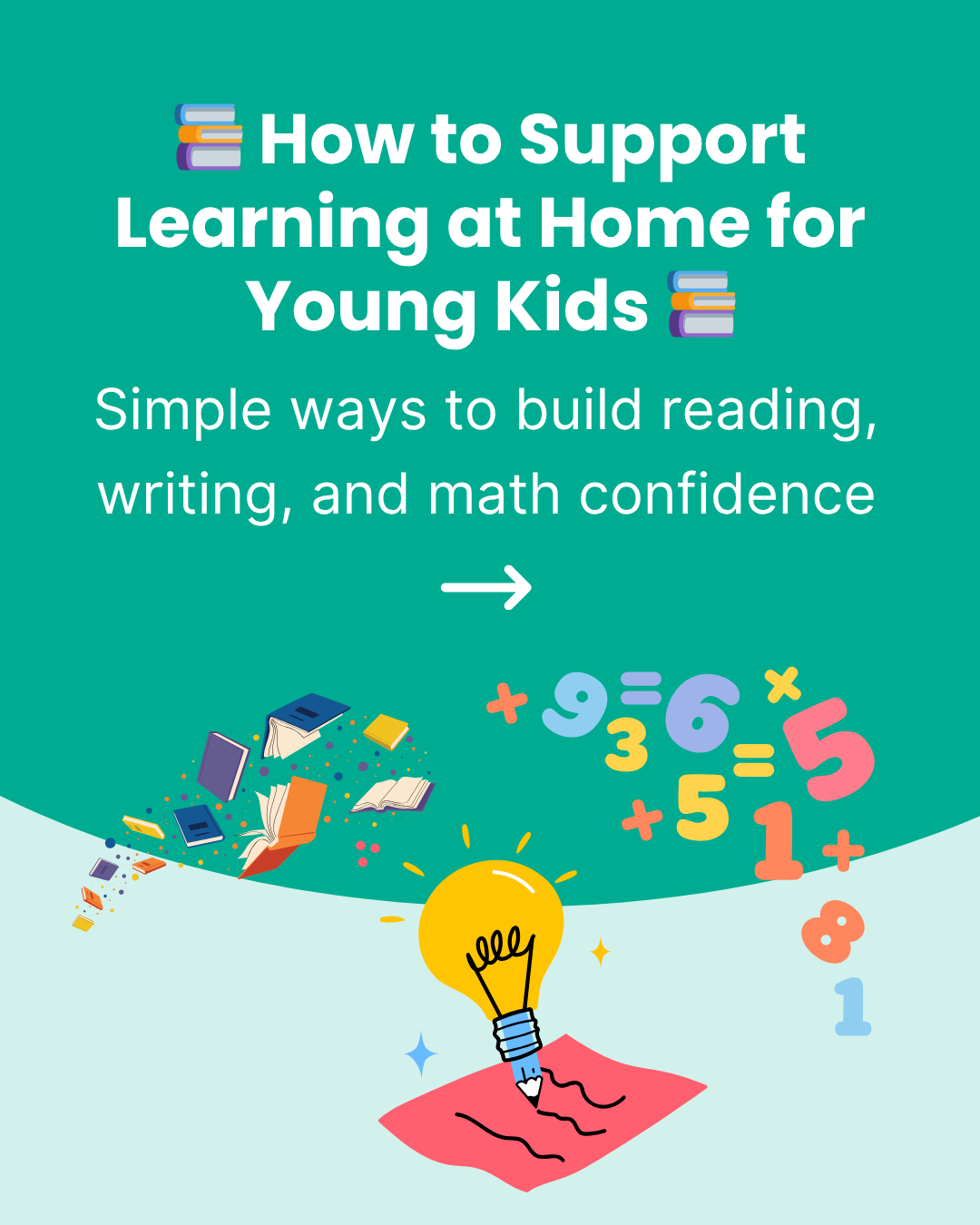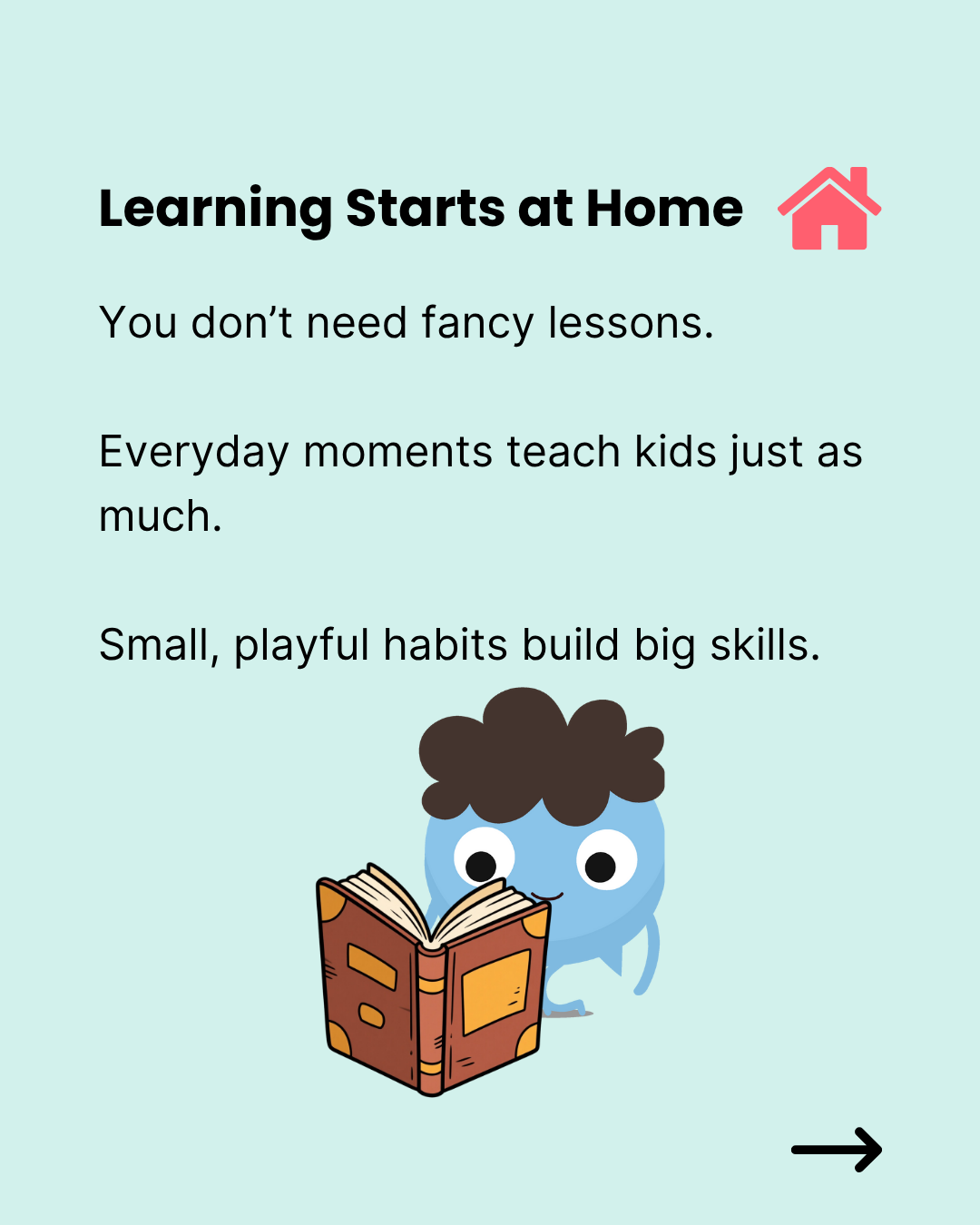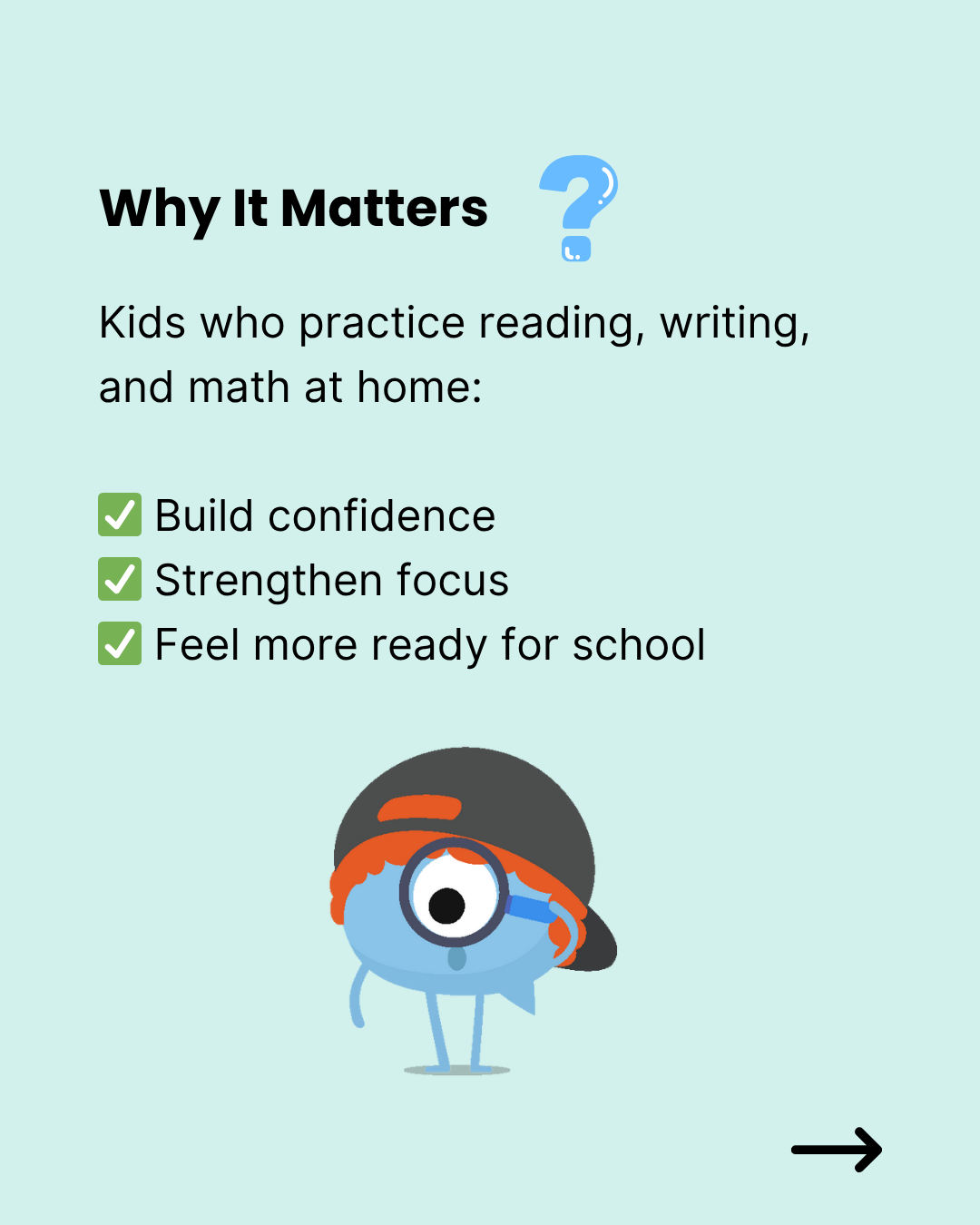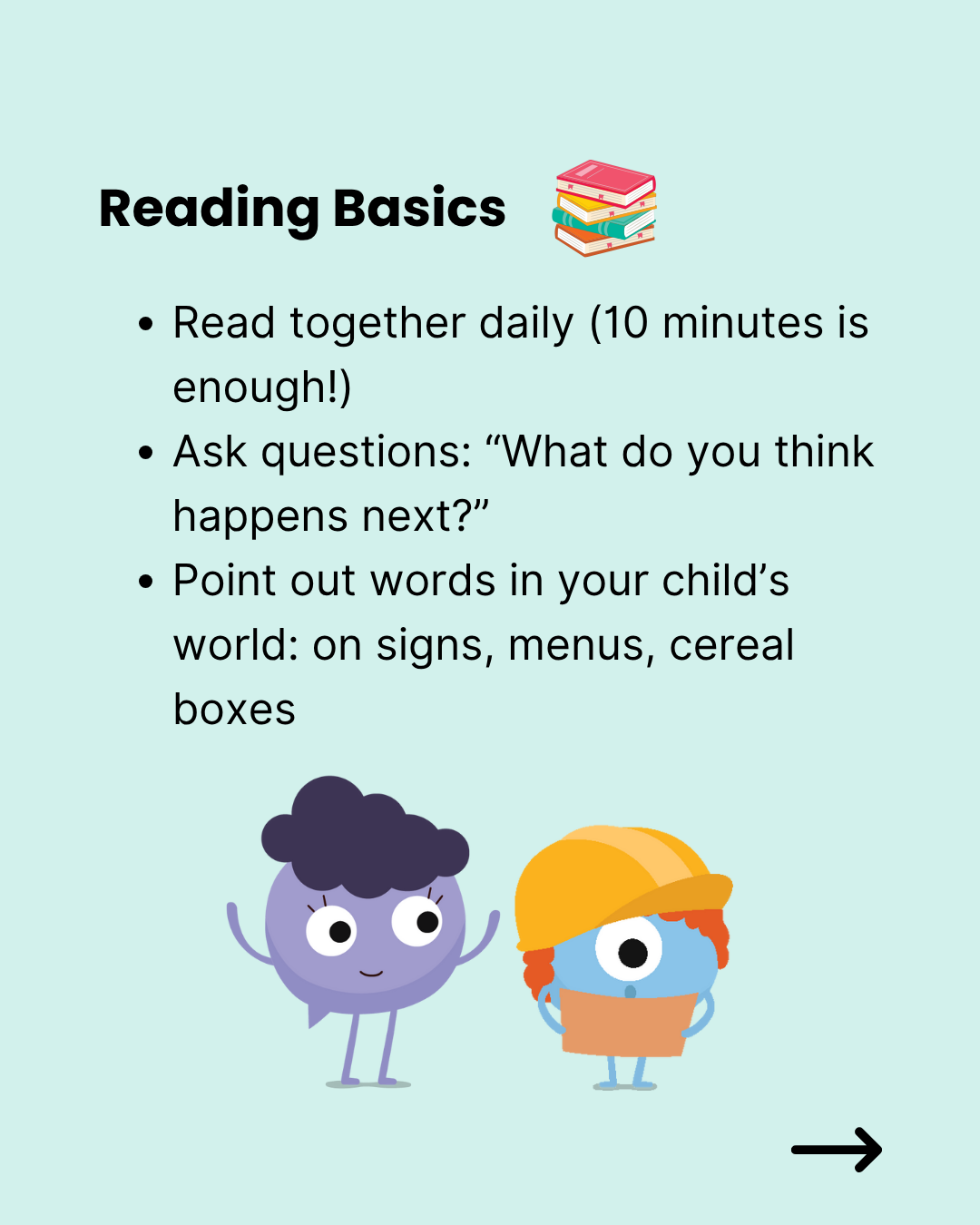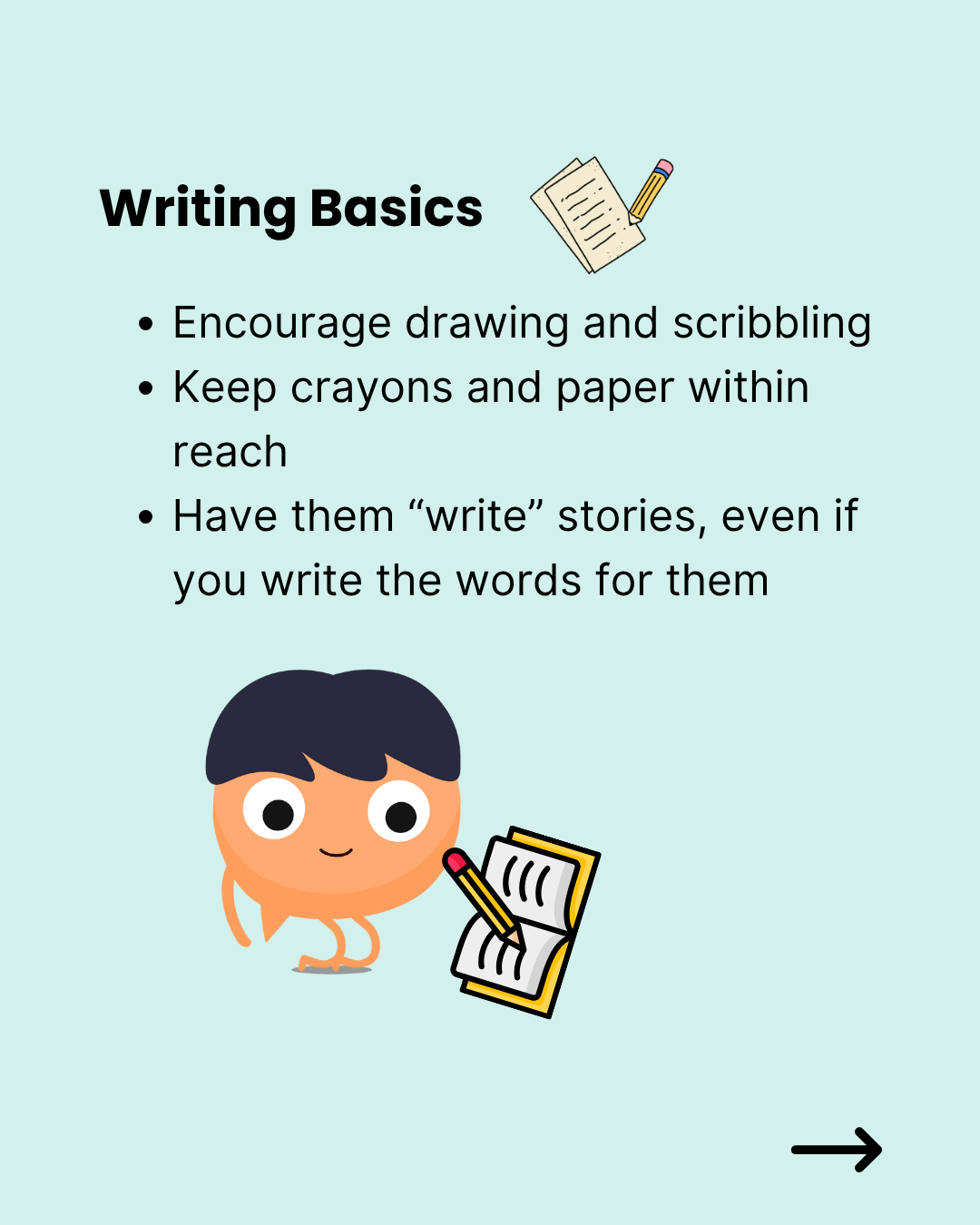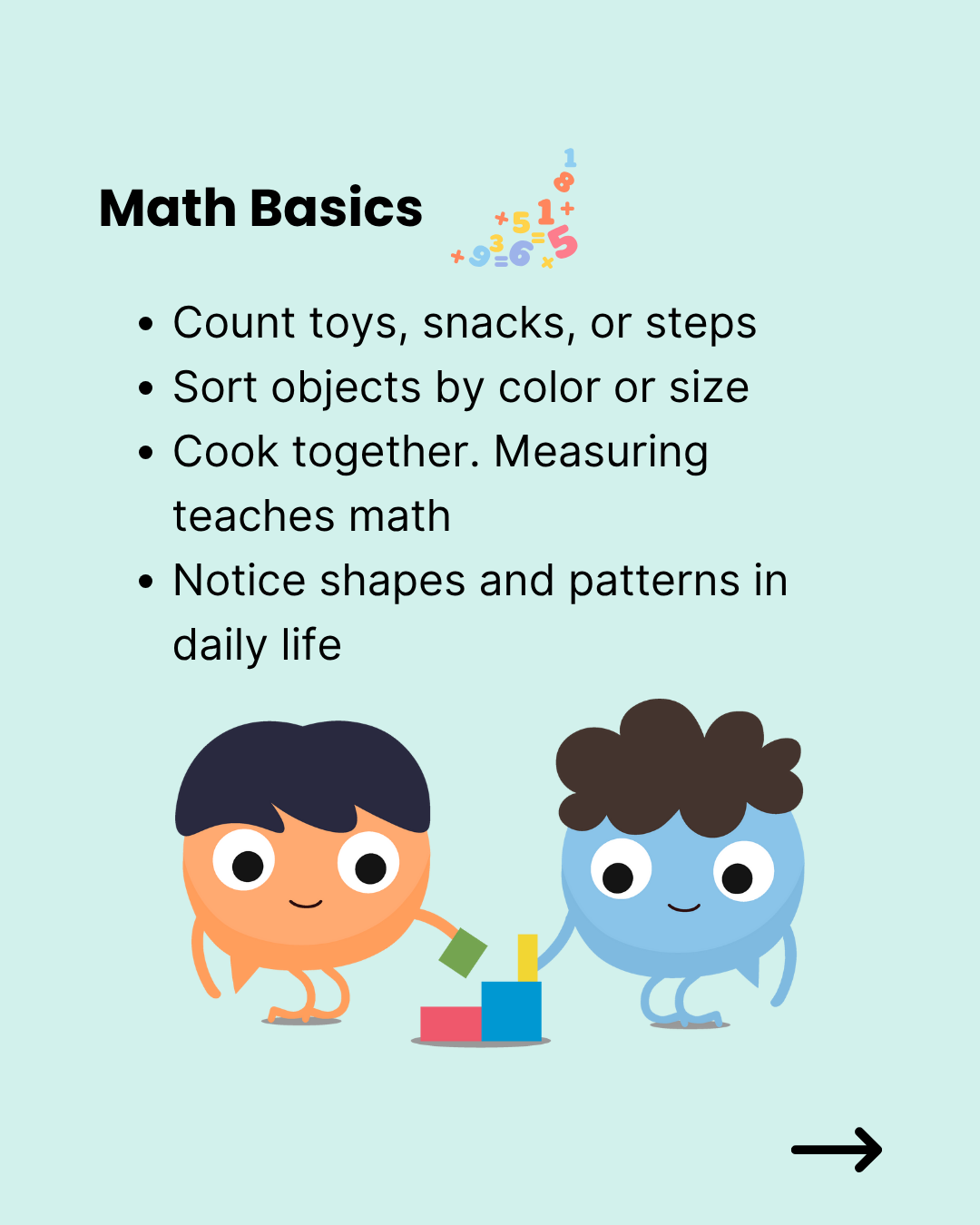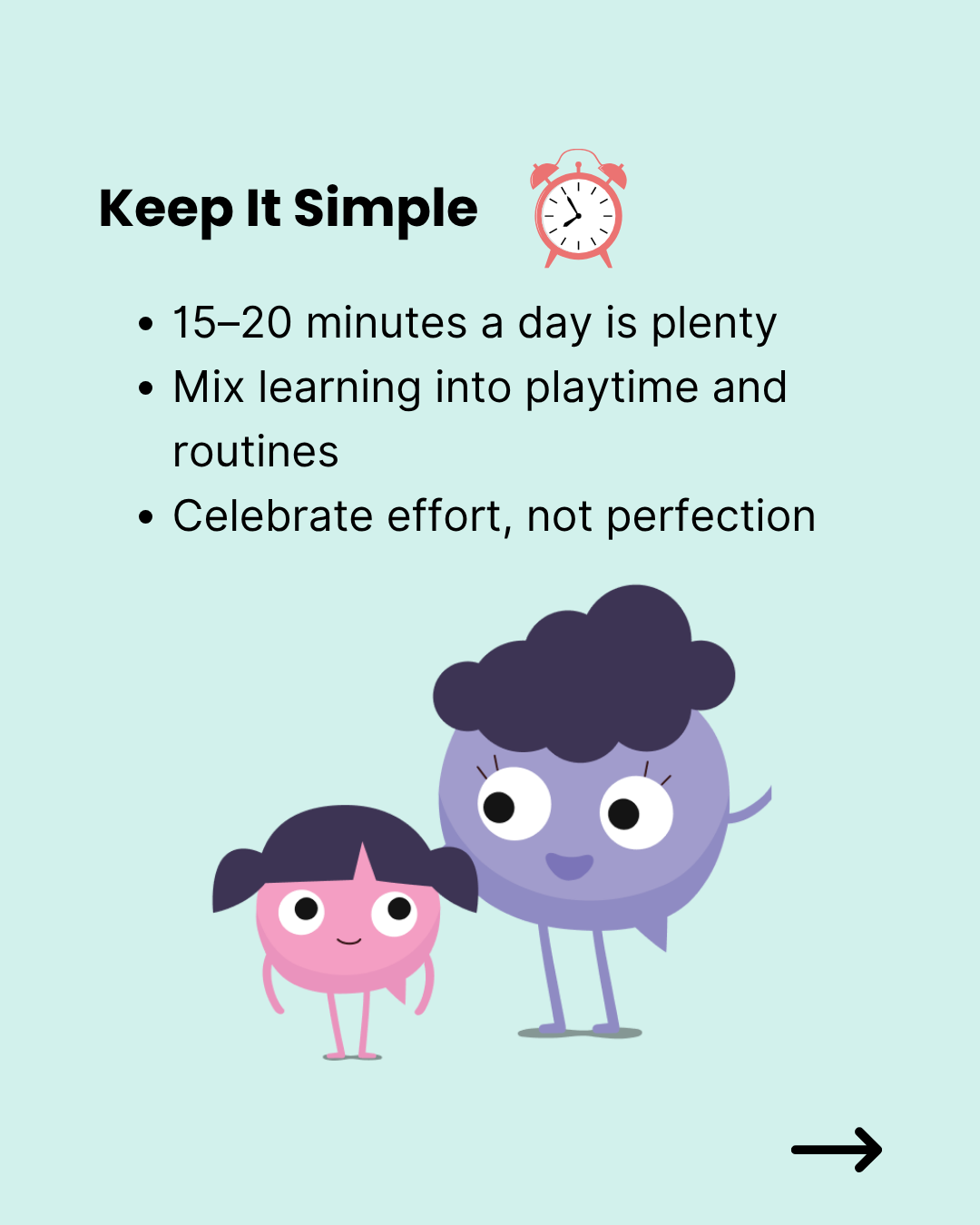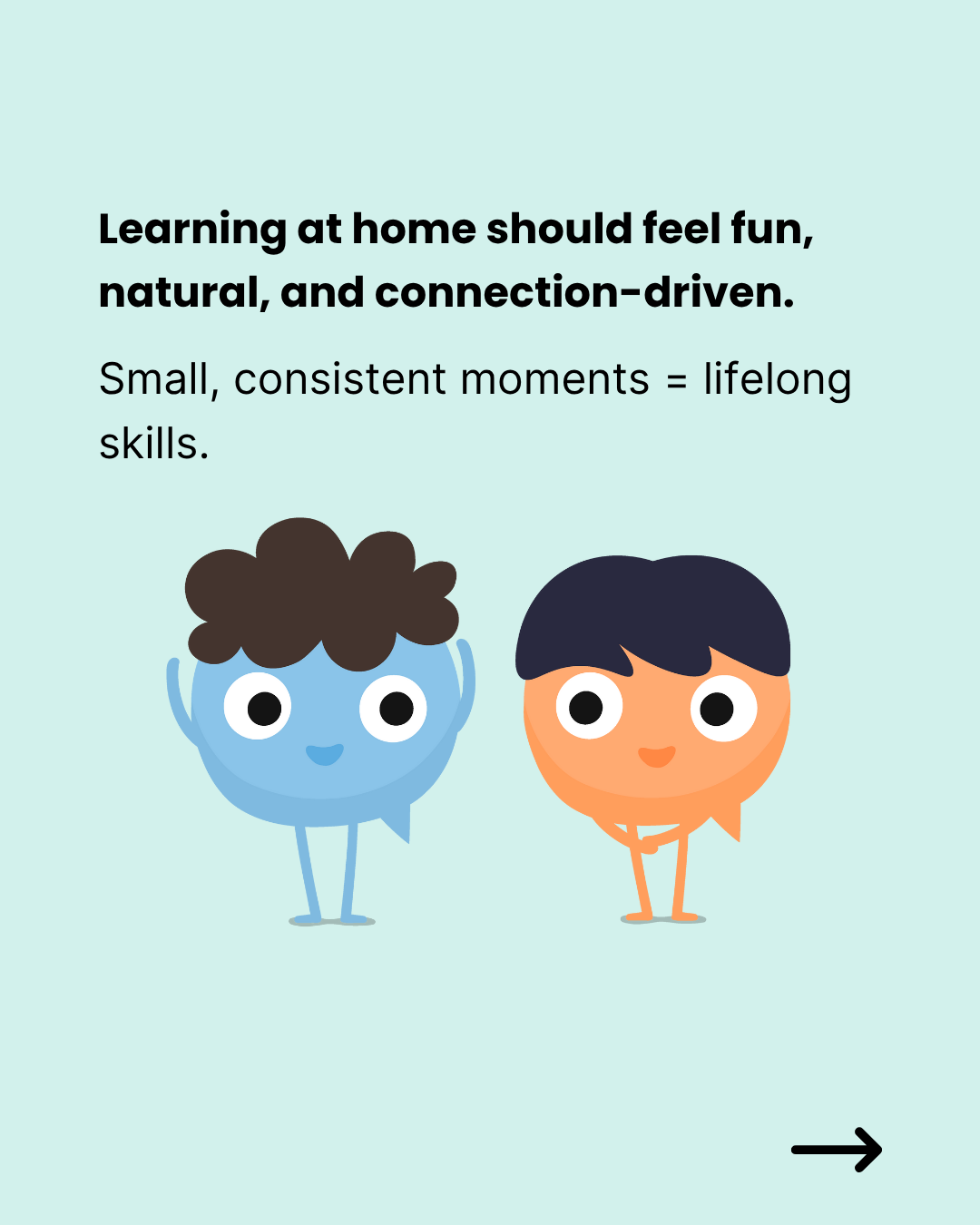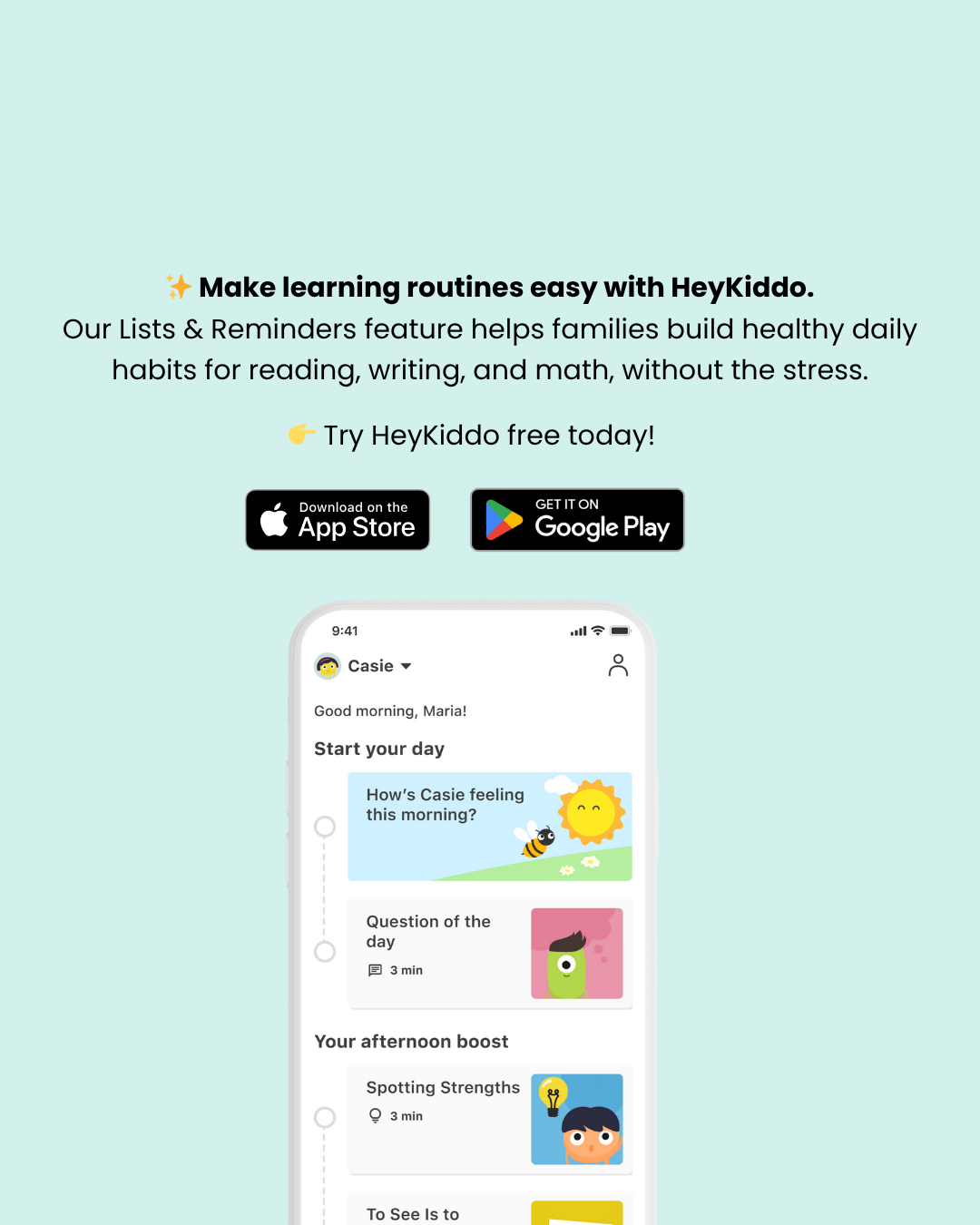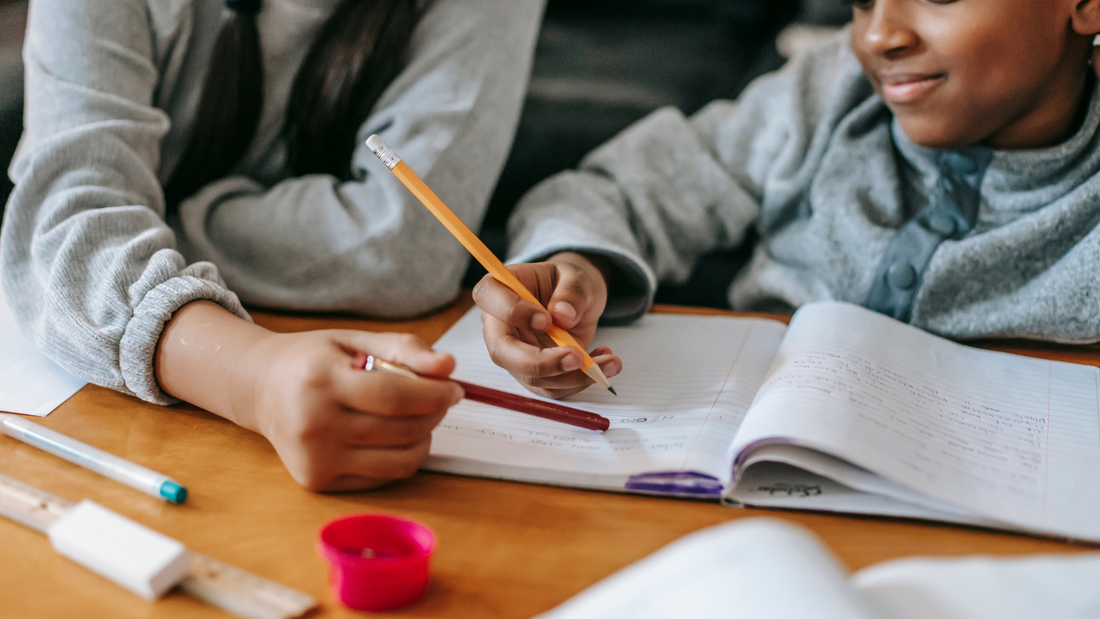
How to Support Learning at Home for Young Kids: Reading, Writing, and Math Basics
Share
Every parent wants their child to feel confident in school and beyond. Learning doesn’t just happen in the classroom, it begins at home. For young children, everyday experiences can shape the foundation for reading, writing, and math skills.
The truth is that simple, playful routines are the most effective. With a few strategies, you can weave learning into daily life in ways that feel natural and fun. This guide shares practical parenting tips for supporting learning at home.
Why Supporting Learning at Home Matters?
Kids who practice literacy and math basics outside of school can develop stronger skills, better focus, and more confidence in the classroom. Other benefits include:
- Strengthening the parent-child bond through shared learning activities
- Building consistency and structure
- Helping kids see reading, writing, and math as enjoyable
📖 Reading Basics at Home
Reading is one of the most important skills a child will ever learn. Parents play a key role in building a love of reading and learning. Even a few minutes a day makes a big impact!
Parenting tips 💡
- Read together daily. Choose books with colorful pictures and simple stories for younger kids.
- Ask questions while reading. Pause to ask, “What do you think will happen?” or “How do you think the character feels?”
- Label your world. Point out words on street signs, cereal boxes, and menus to show that words exist all around us.
- Model excitement. Let your child see you enjoying books or articles. Enthusiasm is contagious!
✍️ Writing Basics at Home
Writing starts long before kids can spell words. Early writing might look like scribbles and drawings. Working on these skills allows kids to develop strength, coordination, and confidence.
Parenting Tips 💡
- Provide tools. Keep crayons, pencils, and paper within reach.
- Start with scribbles. Encourage drawing, doodling, and pretend writing. It all builds fine motor skills.
- Name practice. Have your child trace or copy their name to connect letters with identity.
- Use writing prompts. Ask your child to draw a picture and “write” a story about it. For younger kids, they can tell you while you write.
➗ Math Basics at Home
Math is everywhere: in the kitchen, the playground and the grocery store. Simple activities bring numbers and patterns to life.
Parenting Tips 💡
- Count everything. Add up how many steps to the door, apples in a bowl, or toy cars on the floor.
- Play sorting games. Have your child group items by color, shape, or size.
- Use real-life math. Let kids help measure ingredients while cooking or set the table by counting forks.
- Introduce shapes and patterns. Point out triangles on road signs or repeating patterns on clothing.
Creating a Daily Learning Rhythm
Kids thrive with consistency. A short, predictable structure makes learning feel natural and stress-free. Consider these ideas:
- Set aside 15–20 minutes a day. Use this time for reading, writing, and practicing math.
- Keep it playful. Choose games, songs, and storytelling as fun, learning activities.
- Mix it into daily life. Read recipes, write grocery lists, and count change.
- Celebrate effort. Praise curiosity and learning, not just correct answers.
✨ HeyKiddo Can Help
Want support in building healthy daily learning habits? HeyKiddo’s new Lists & Reminders feature helps parents create simple routines that stick—from nightly reading time to daily writing practice.
👉 Try HeyKiddo free today and discover how easy it can be to support your child’s learning at home.






